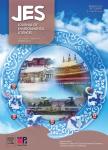Resolving the influence of nitrogen abundances on sediment organic matter in macrophyte-dominated lakes, using fluorescence spectroscopy
Resolving the influence of nitrogen abundances on sediment organic matter in macrophyte-dominated lakes, using fluorescence spectroscopy作者机构:State Key Laboratory of Environmental Criteria and Risk Assessment State Environmental Protection Key Laboratory for Lake Pollution Control Research Center of Lake Eco-environment Chinese Research Academy of Environmental Sciences School of Environment and Planning Liaocheng University
出 版 物:《Journal of Environmental Sciences》 (环境科学学报(英文版))
年 卷 期:2015年第27卷第1期
页 面:197-206页
核心收录:
学科分类:0830[工学-环境科学与工程(可授工学、理学、农学学位)] 07[理学] 08[工学] 09[农学] 0815[工学-水利工程] 0903[农学-农业资源与环境] 0713[理学-生态学]
基 金:supported by the National Basic Research Program (973) of China (No. 2012CB417004) the National Natural Science Foundation of China (Nos. U1202235,41173118, 41301544) the Shandong Provincial Natural Science Foundation (No. ZR2012DQ003)
主 题:Colonized sediment Non colonized sediment Nitrogen enrichment Submersed macrophyte Sediment organic matter Fluorescence feature
摘 要:A controlled experiment was designed to resolve the influence of nitrogen abundance on sediment organic matters in macrophyte-dominated lakes using fluorescence *** biomass showed coincident growth trends with time, but different variation rates with nitrogen treatment. All plant growth indexes with nitrogen addition(N, NH4Cl100, 200, 400 mg/kg, respectively) were lower than those of the control group. Four humiclike components, two autochthonous tryptophan-like components, and one autochthonous tyrosine-like component were identified using the parallel factor analysis model. The results suggested that the relative component changes of fluorescence in the colonized sediments were in direct relation to the change of root biomass with time. In the experiment, the root formation parameters of the plants studied were significantly affected by adding N in sediments, which may be related to the reason that the root growth was affected by N *** a low concentration of N to sediments can play a part in supplying nutrients to the plants. However, the intensive uptake of NH4^+may result in an increase in the intracellular concentration of ammonia, which is highly toxic to the plant cells. Hence, our experiment results manifested that organic matter cycling in the macrophyte-dominated sediment was influenced by nitrogen enrichment through influencing vegetation and relevant microbial activity.



